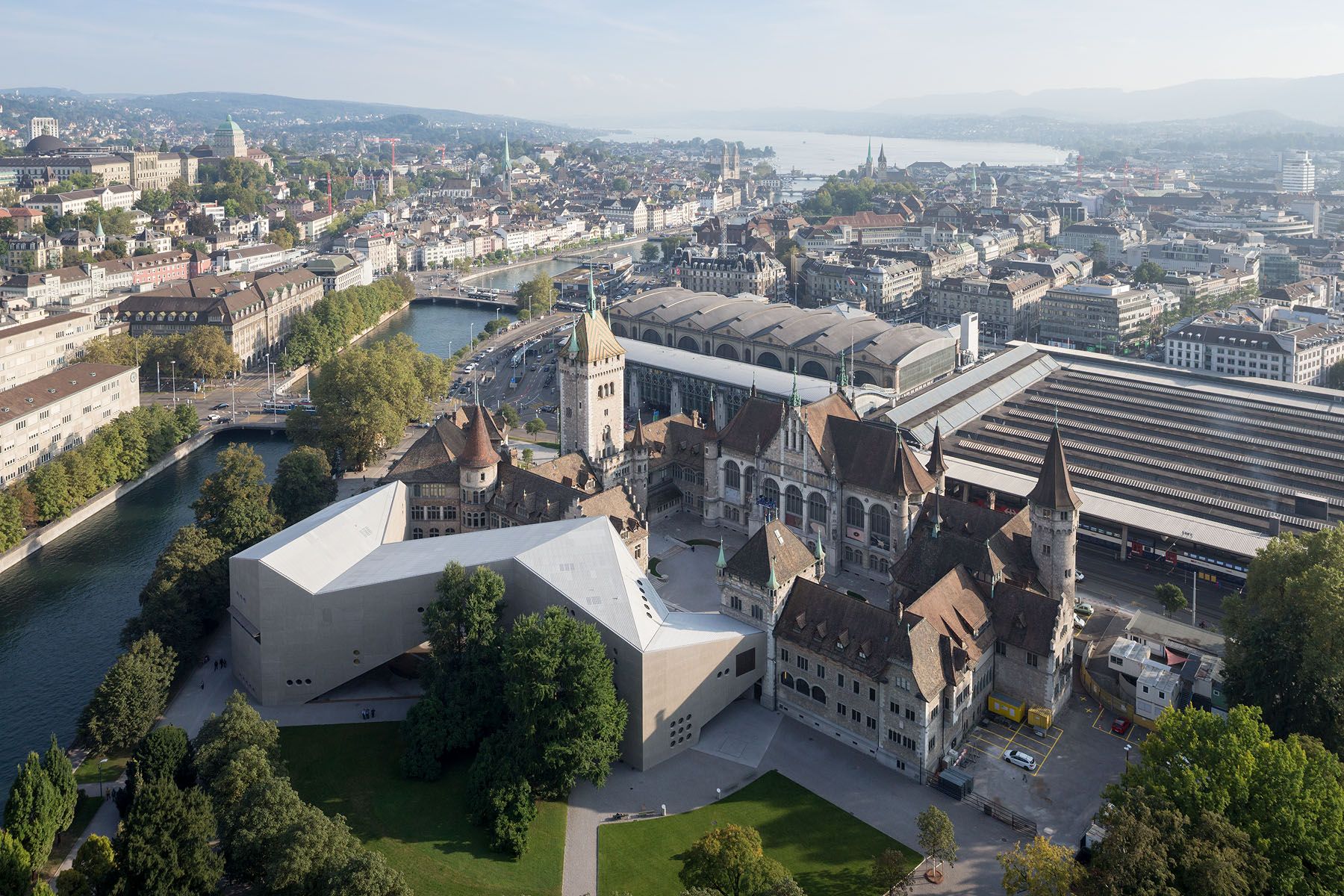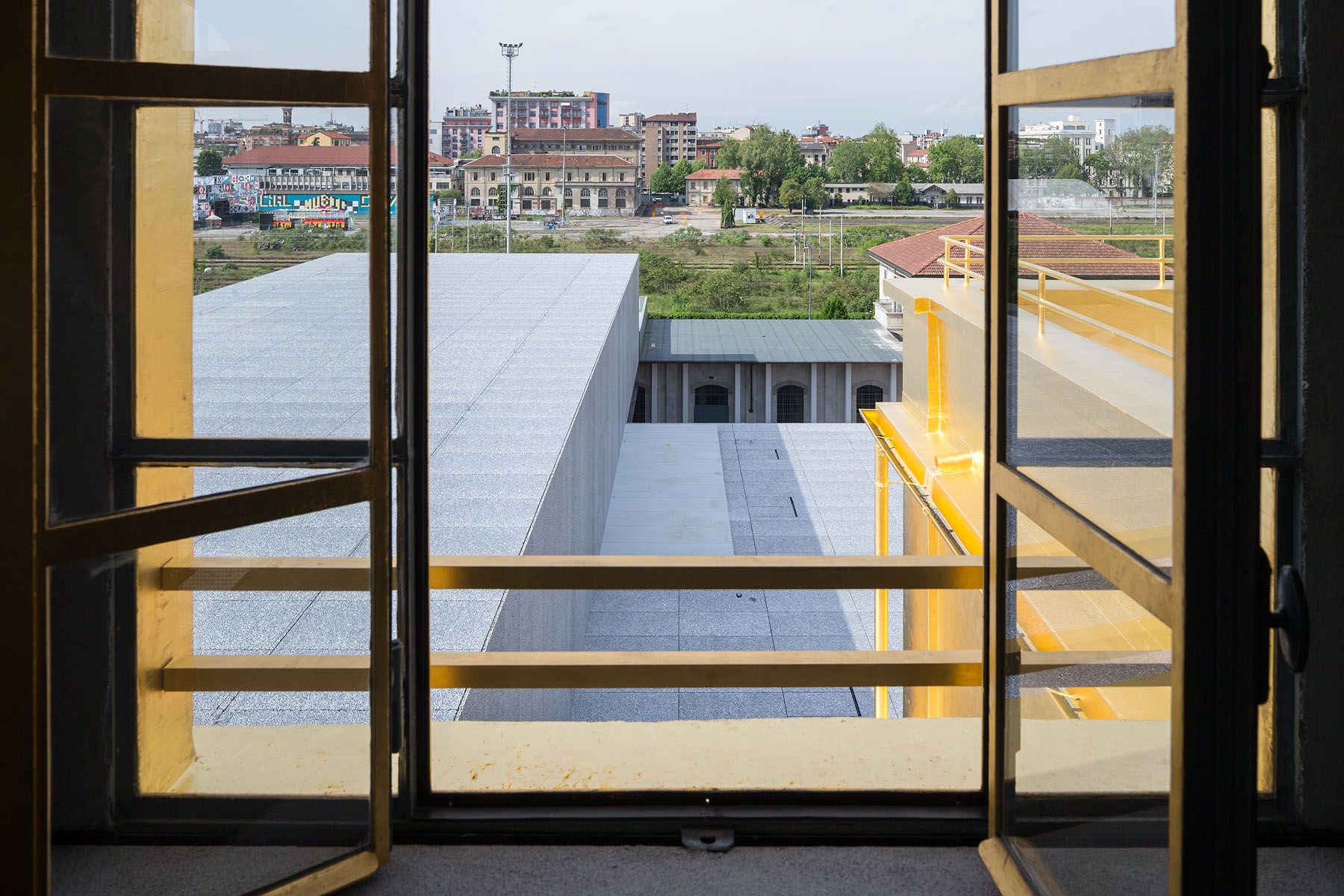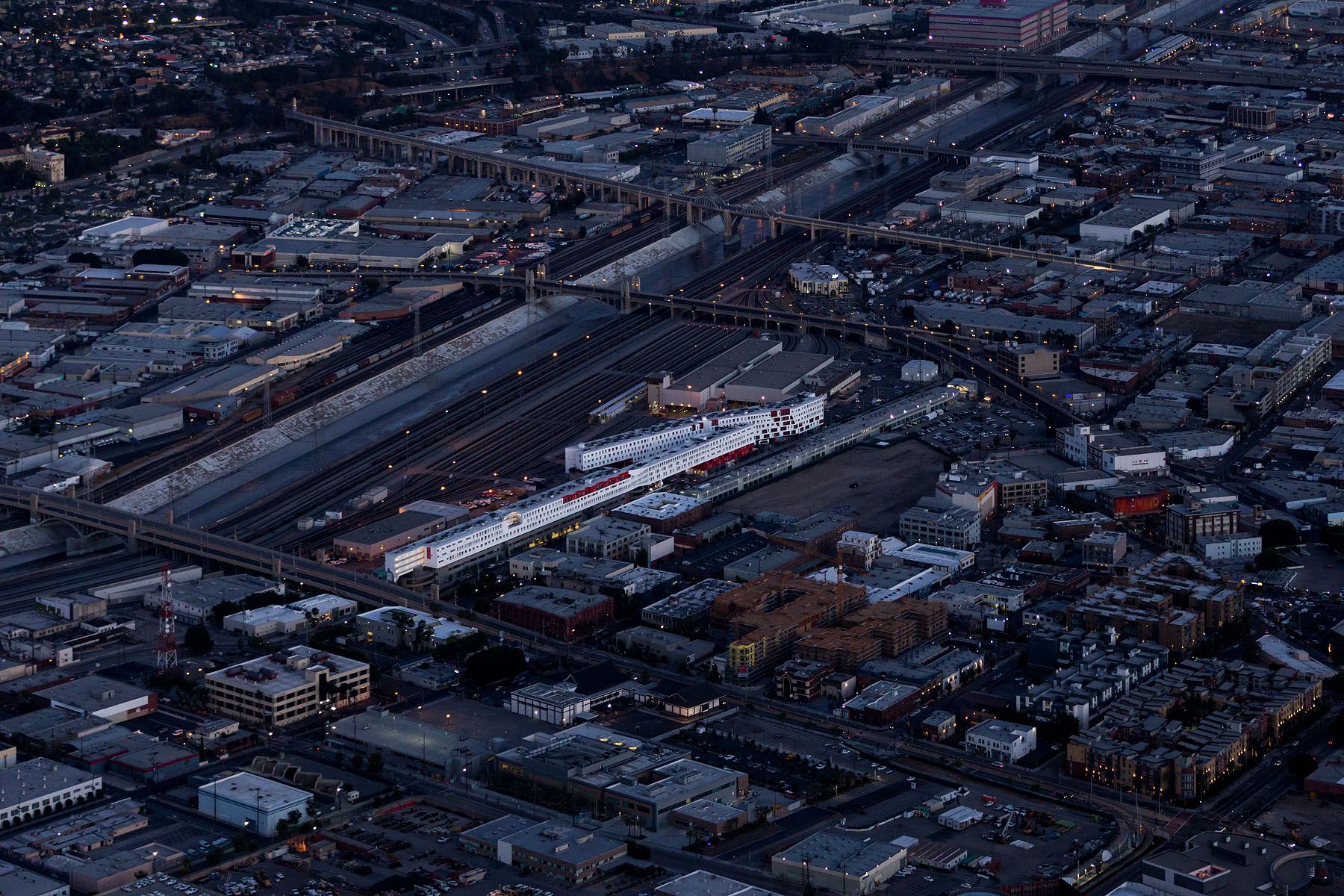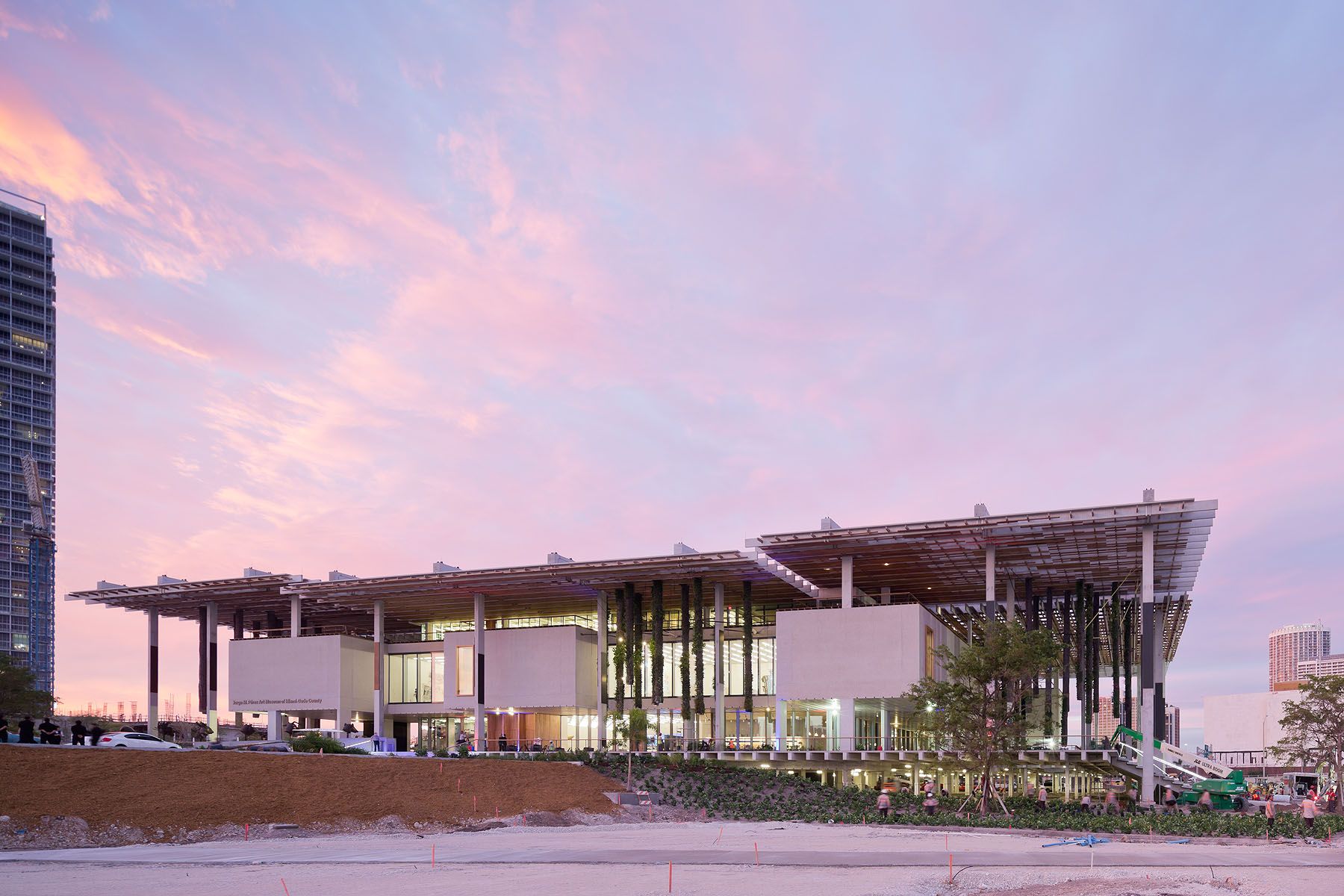Broad Art Museum, East Lansing Michigan – Zaha Hadid & Patrik Schumacher
The New Eli and Edythe Broad Art Museum on Michigan State University’s East Lansing campus bursts from its traditional collegiate setting like a futuristic concertina pushing free from the deep pit of the devil’s orchestra. “It is a strange object sitting on the edge of campus,” admits Zaha Hadid, but one with a magnetic quality, she points out. “This radically abstract object,” adds her partner Patrik Schumacher, “brings this element of making strange—of building something to be explored and discovered.”
The location of the Eli and Edythe Broad Art Museum at the northern Edge of the Michigan State University Campus is influenced by a set of movements adjacent to and across it. The vital street life on the northern side of Grand River Avenue and the historic heart of the university campus at the south side generate a network of paths and visual connections. This highly frequented interface between city and campus has an additional layer, the traffi c along the Grand River Avenue in east-west-direction. The zebra crossings and the street life on the northern side of the street as well as the bus-stops introduce a traversal movement layer in this part of the Grand River Avenue, slowing down the traffic and creating a focus on the structures along this stretch.





